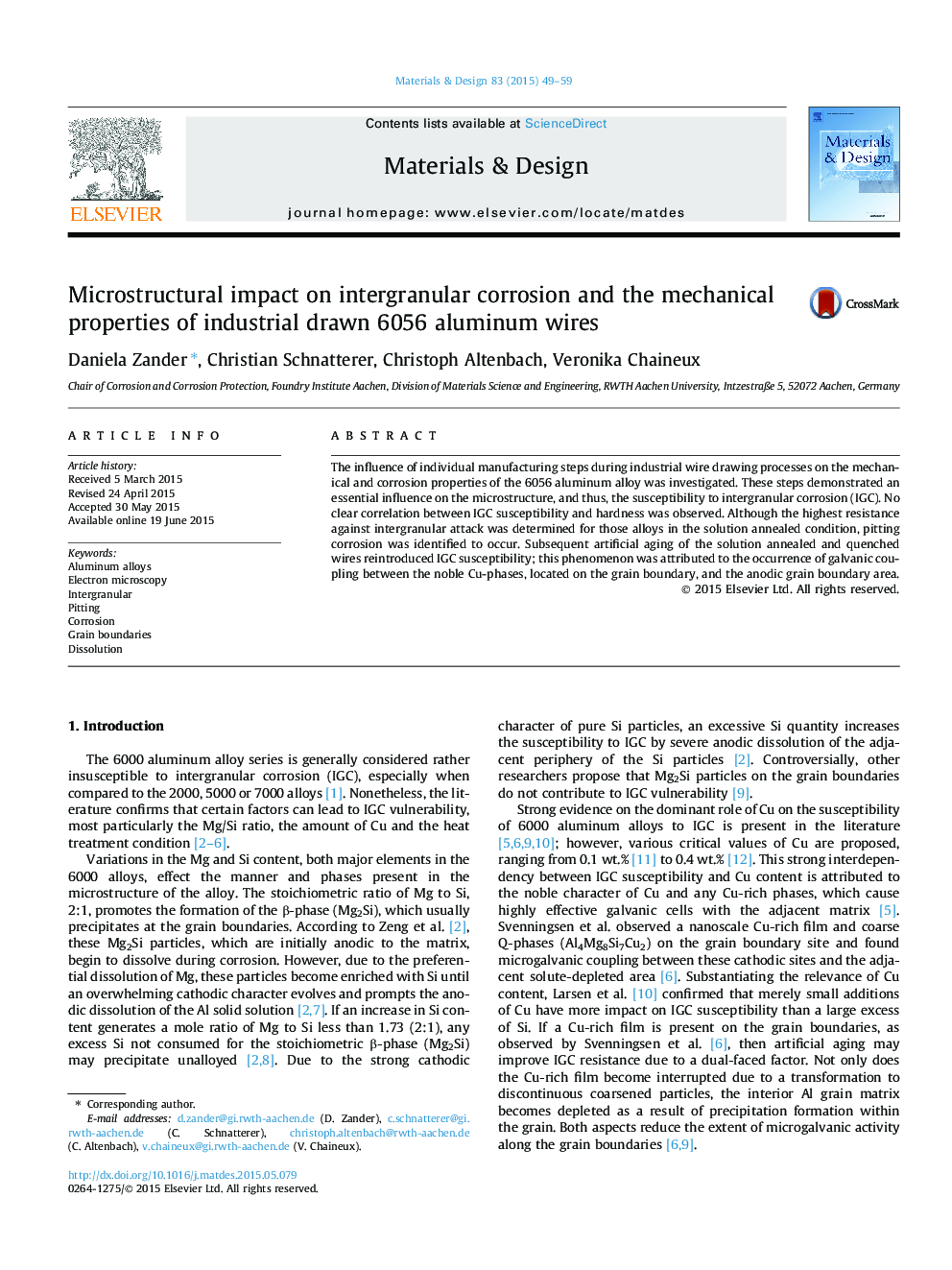| Article ID | Journal | Published Year | Pages | File Type |
|---|---|---|---|---|
| 828410 | Materials & Design | 2015 | 11 Pages |
•In the T4 condition, the Al wire was resistant to IGC.•Pitting was the dominant corrosion mechanism in T4.•Pitting was found to be driven by cathodic AlFeSi(Mn,Cu) particles.•Artificial aging of the T4 samples reintroduced IGC.•The IGC was attributed to Cu-rich particles at the grain boundary.
The influence of individual manufacturing steps during industrial wire drawing processes on the mechanical and corrosion properties of the 6056 aluminum alloy was investigated. These steps demonstrated an essential influence on the microstructure, and thus, the susceptibility to intergranular corrosion (IGC). No clear correlation between IGC susceptibility and hardness was observed. Although the highest resistance against intergranular attack was determined for those alloys in the solution annealed condition, pitting corrosion was identified to occur. Subsequent artificial aging of the solution annealed and quenched wires reintroduced IGC susceptibility; this phenomenon was attributed to the occurrence of galvanic coupling between the noble Cu-phases, located on the grain boundary, and the anodic grain boundary area.
Graphical abstractFigure optionsDownload full-size imageDownload as PowerPoint slide
